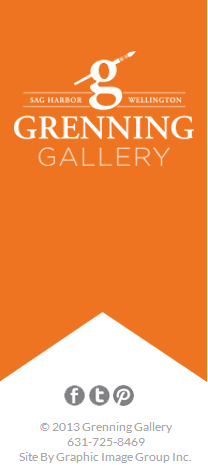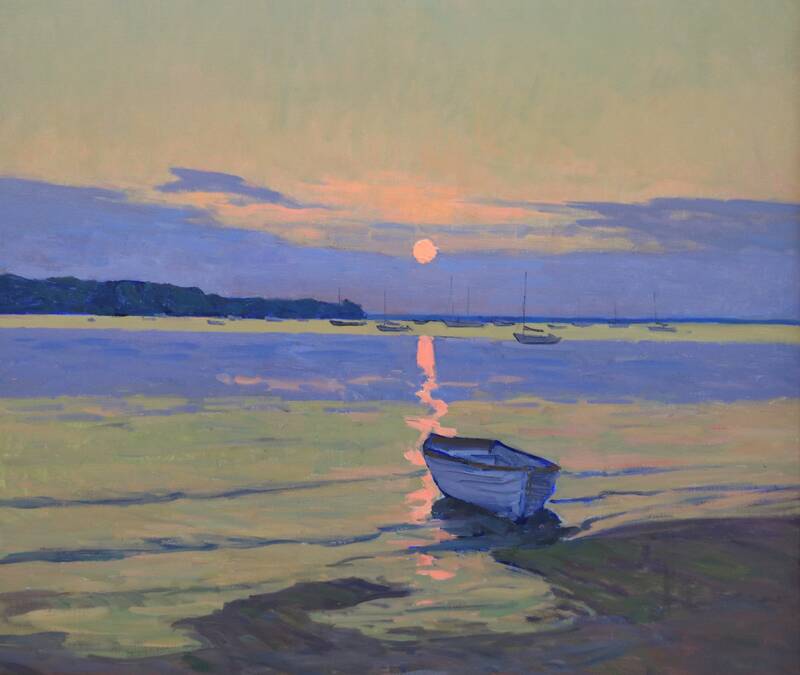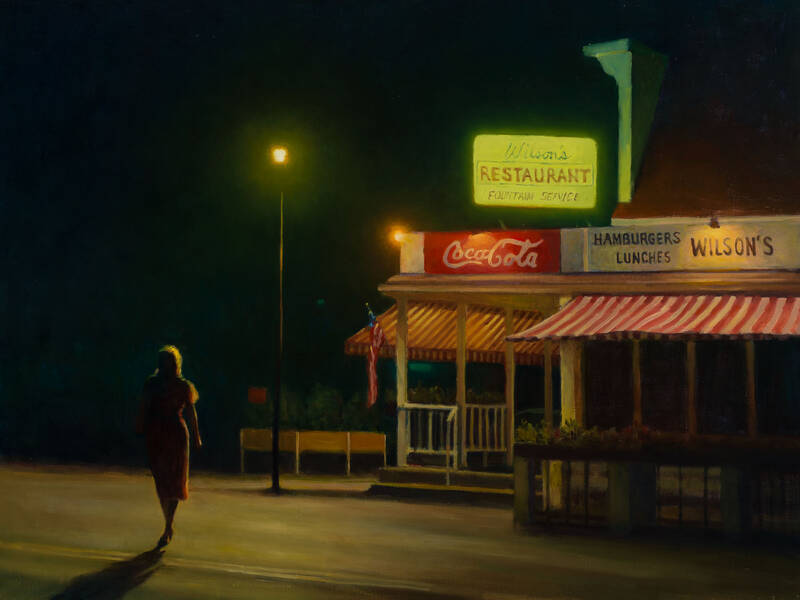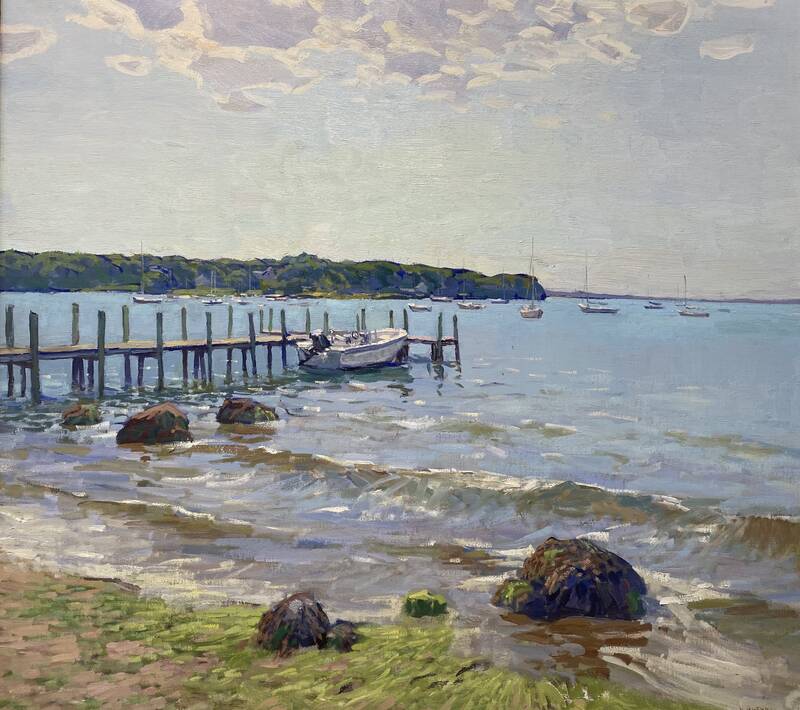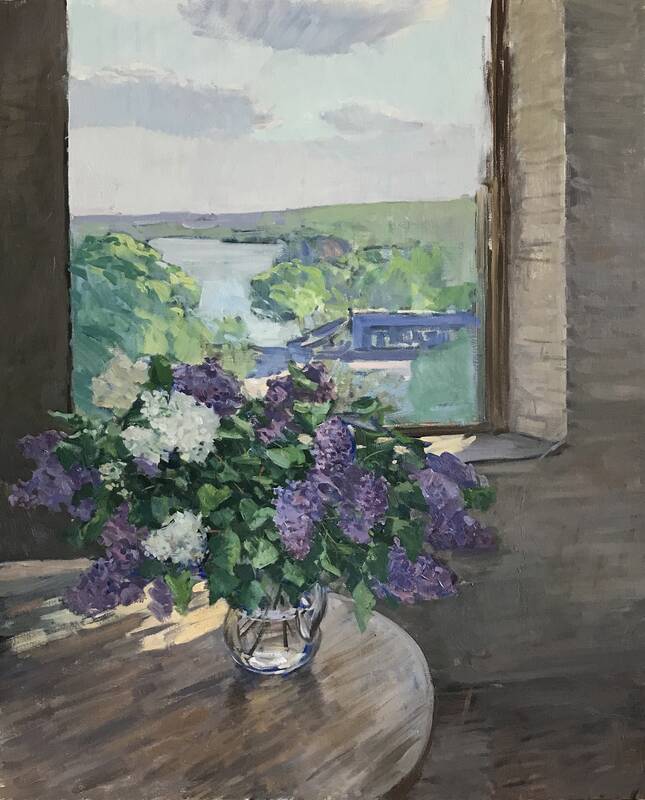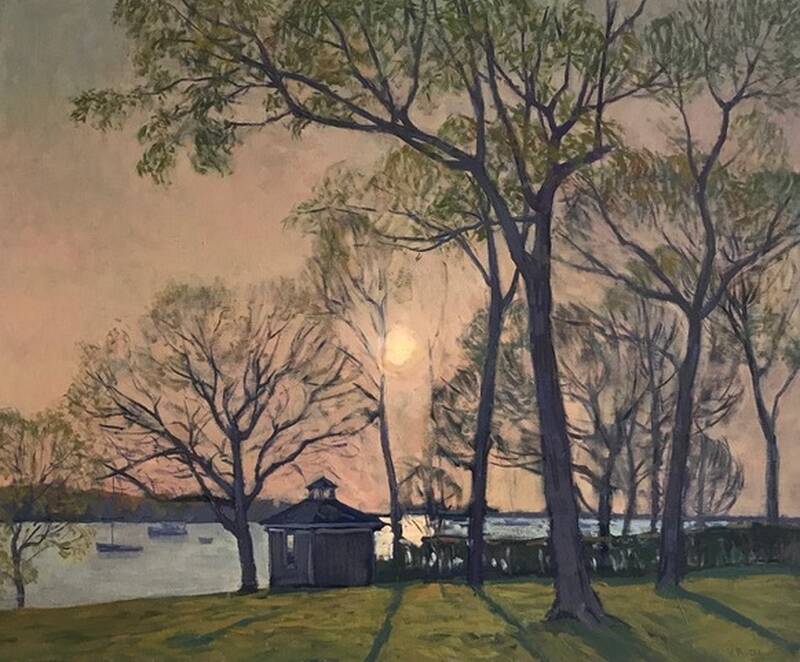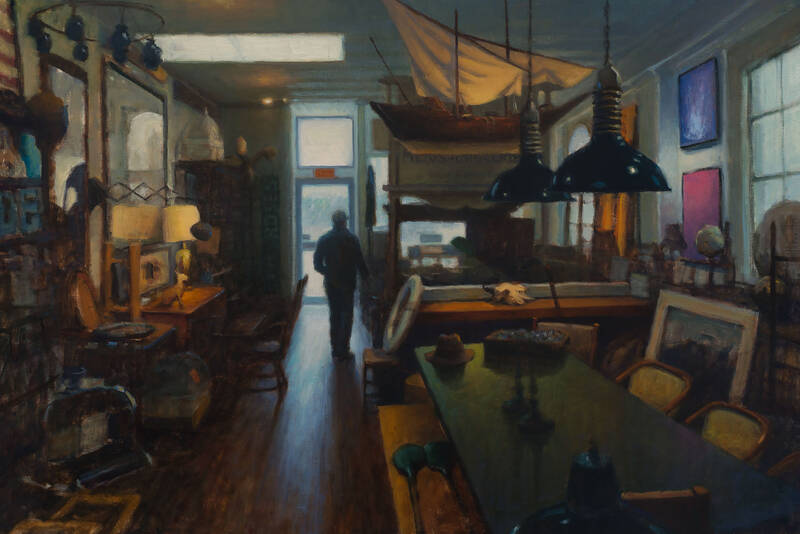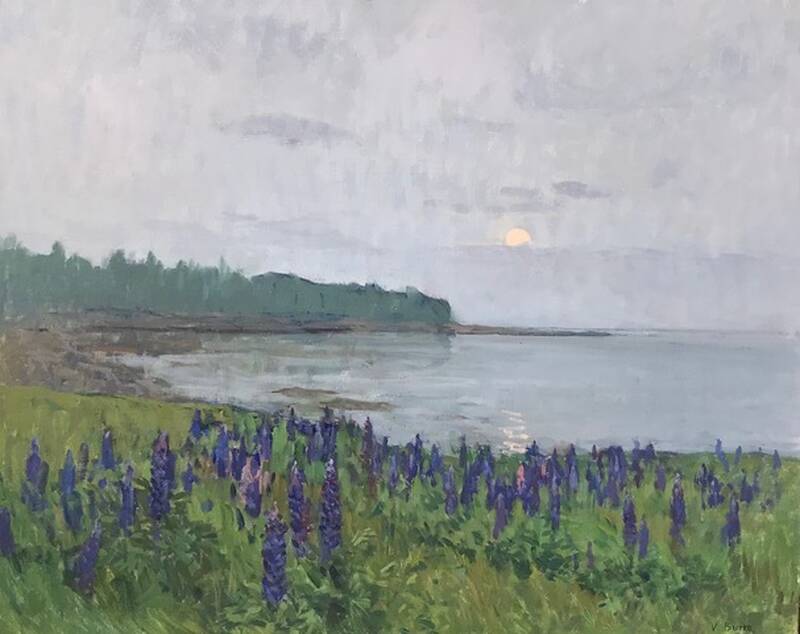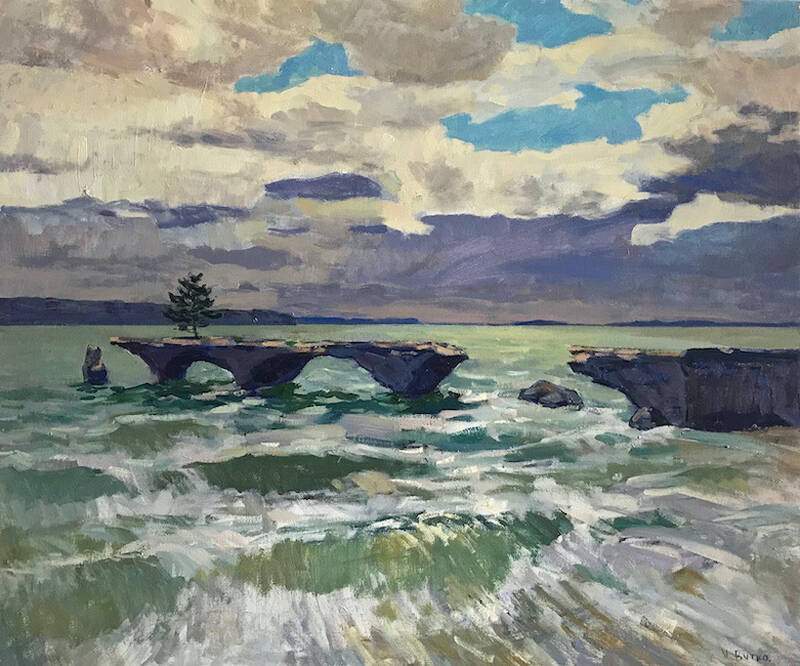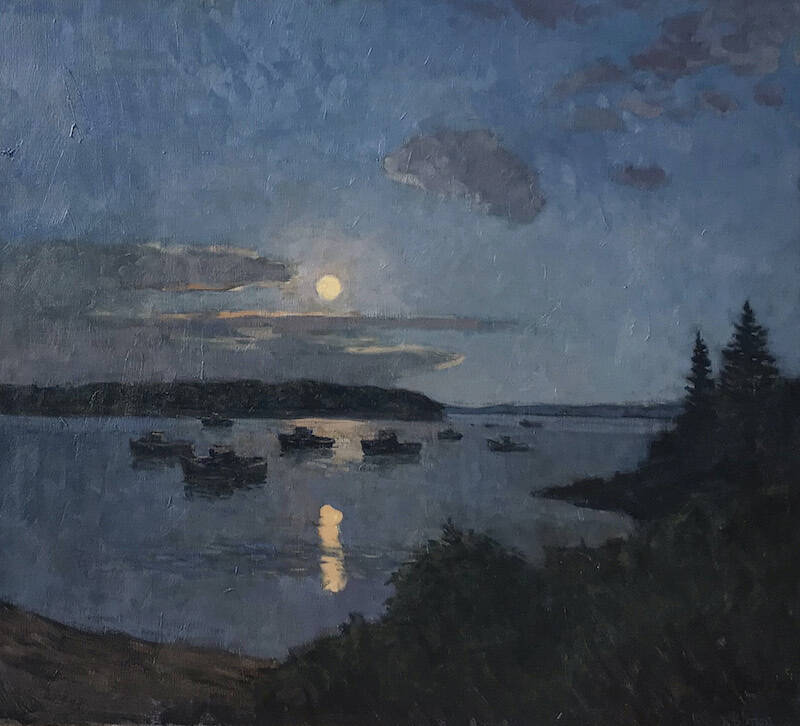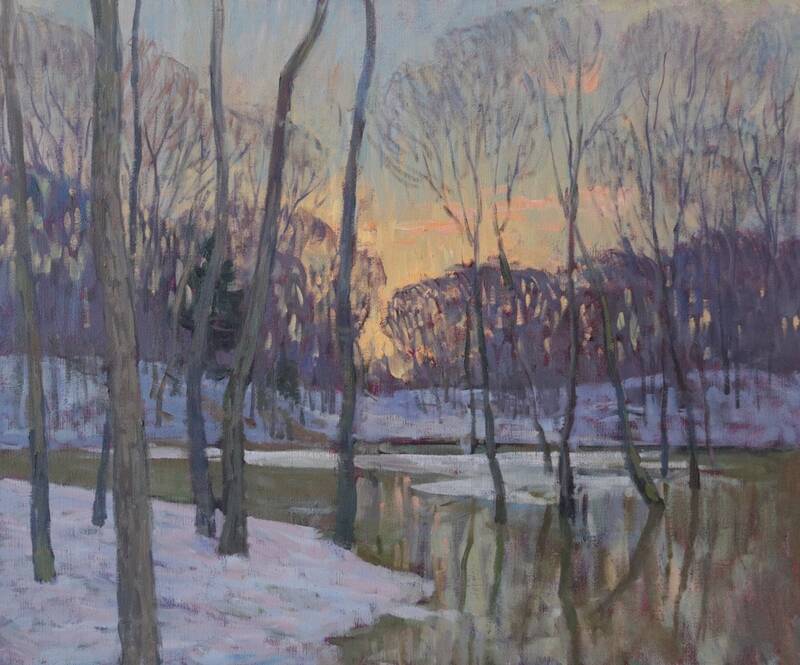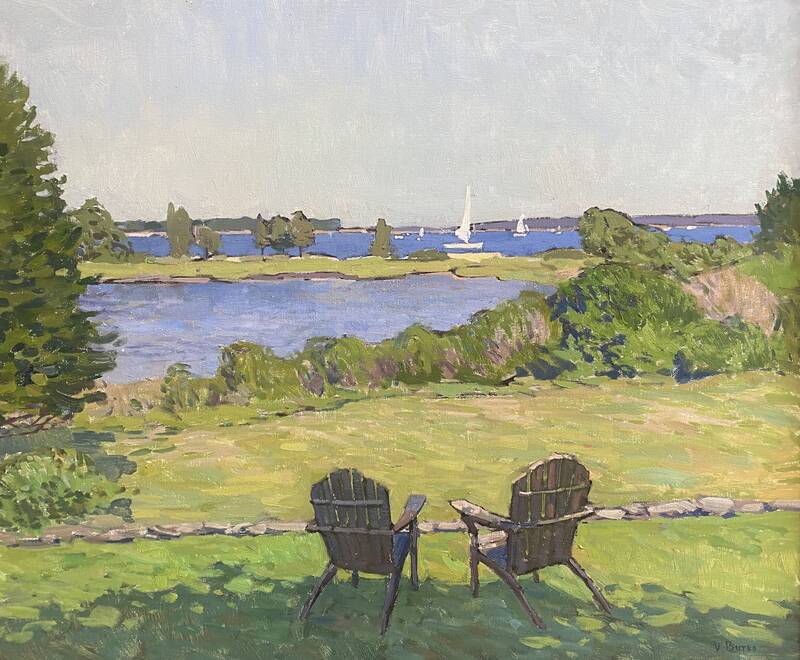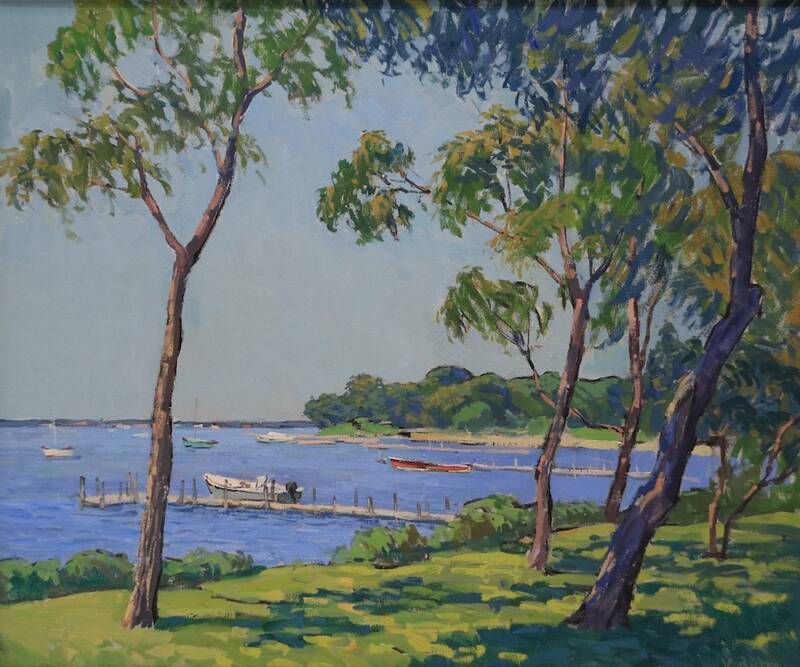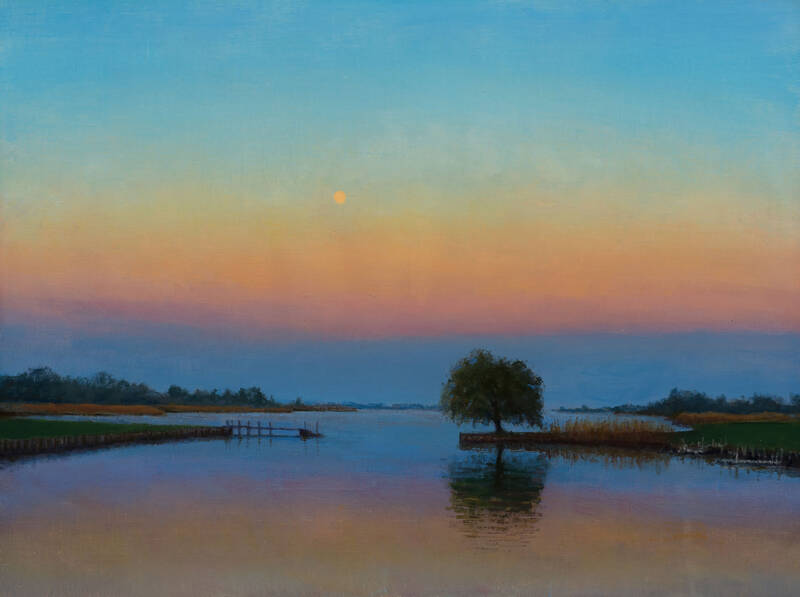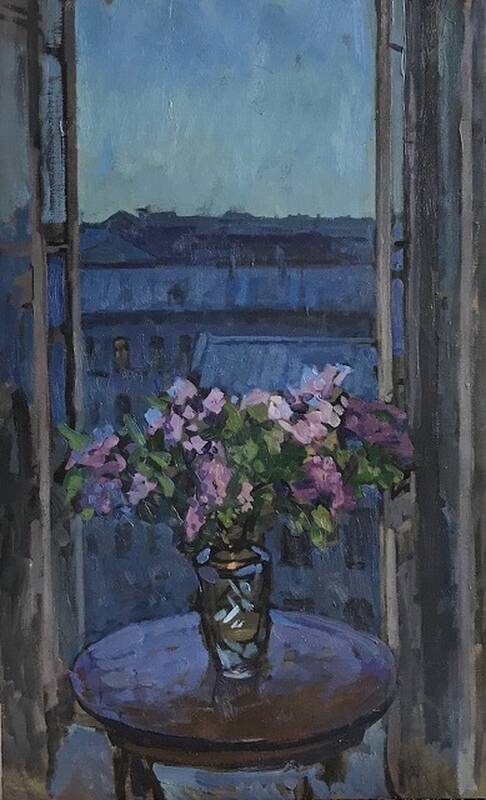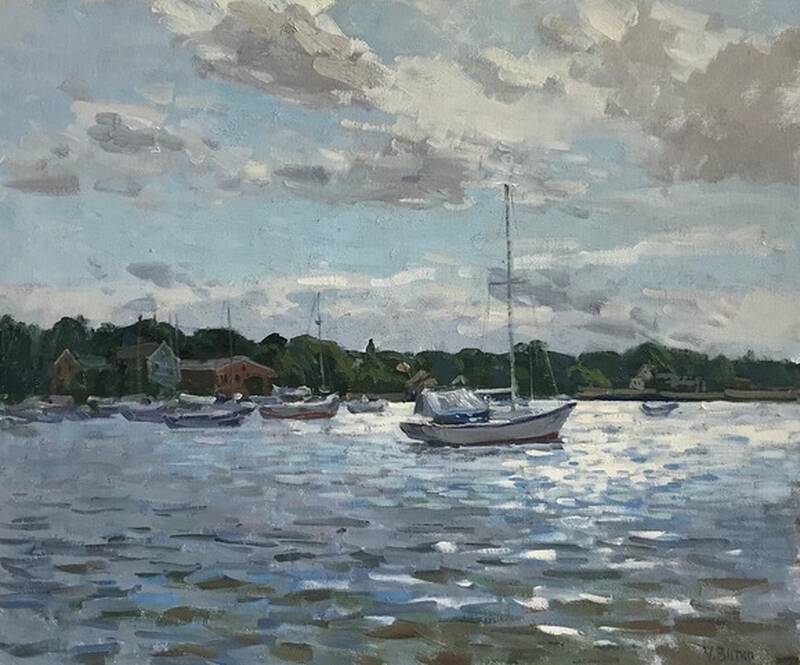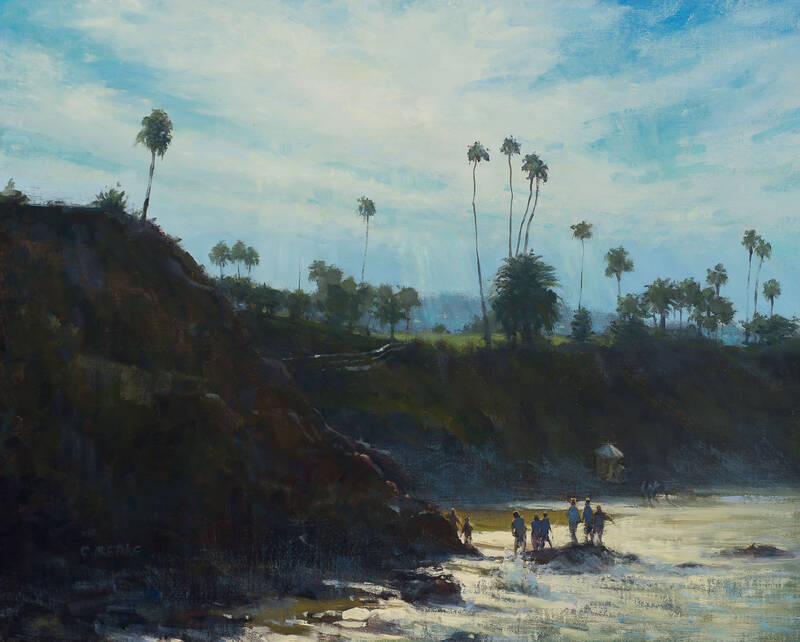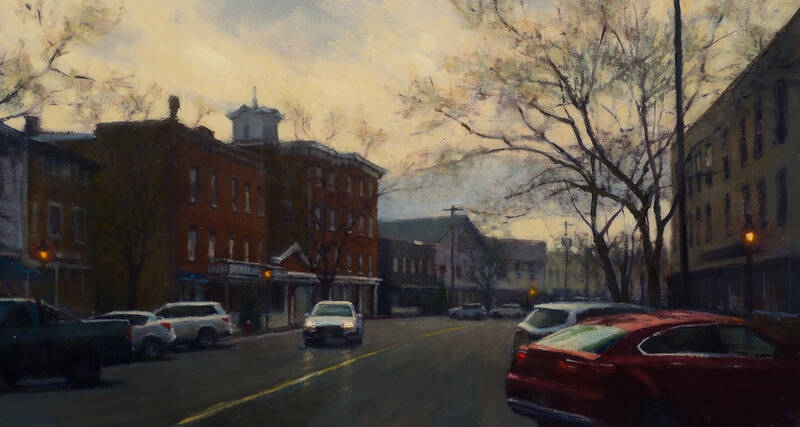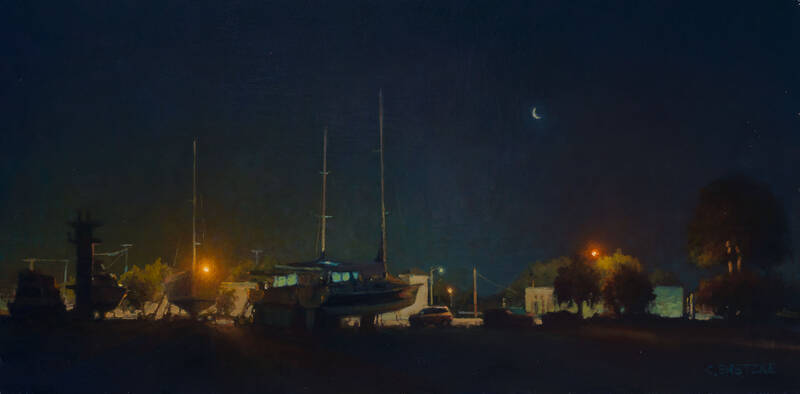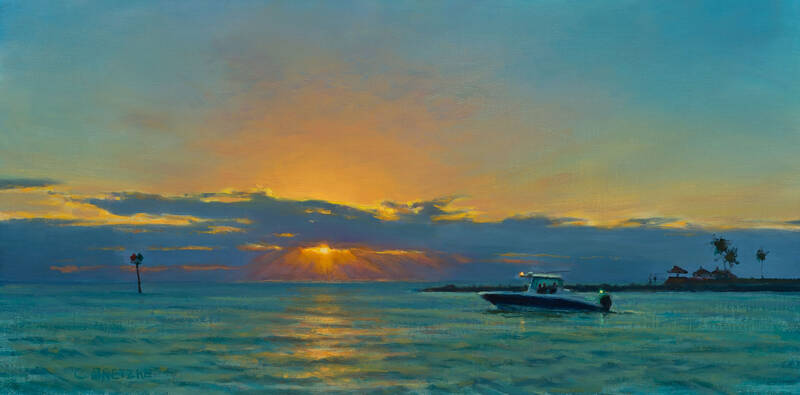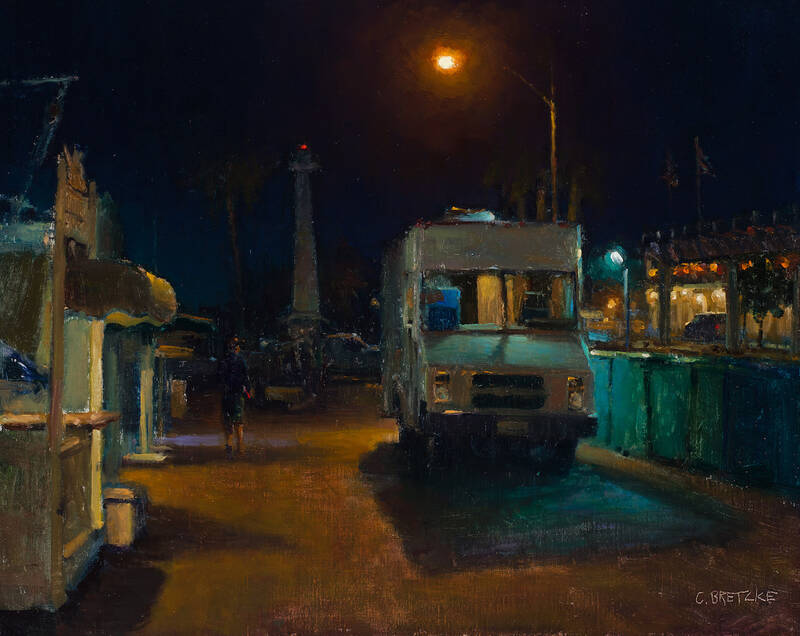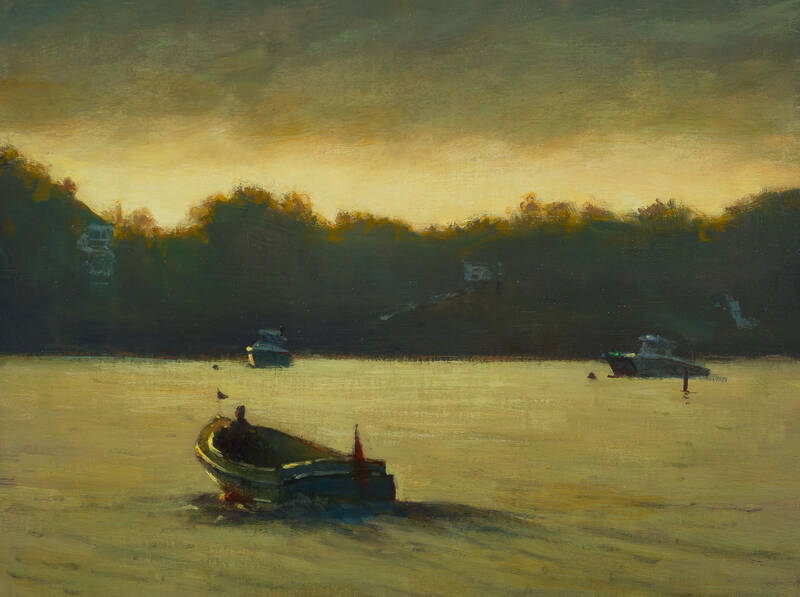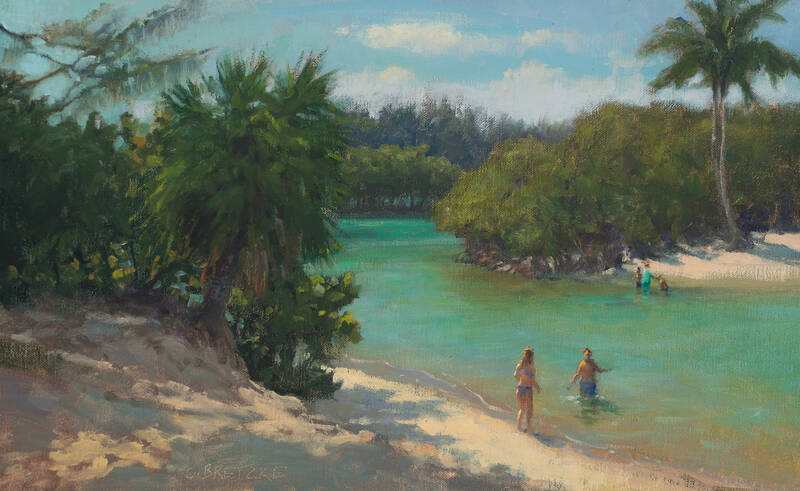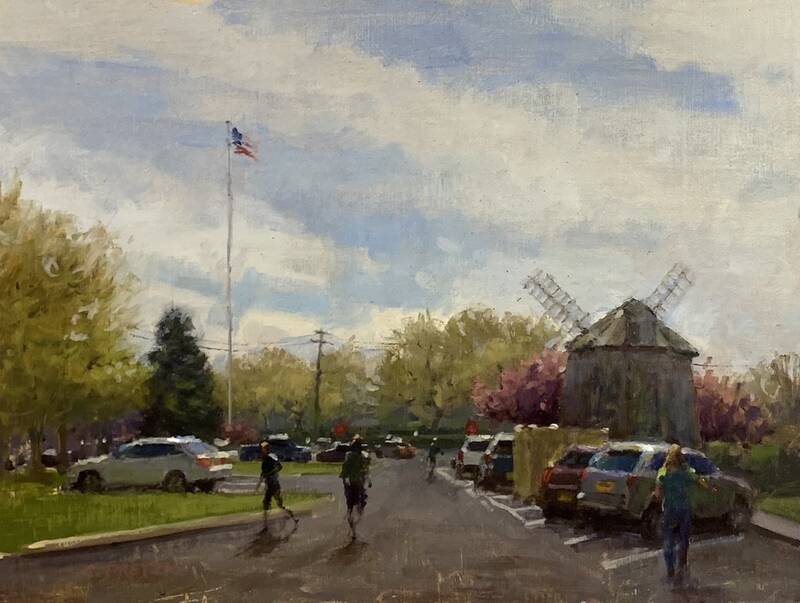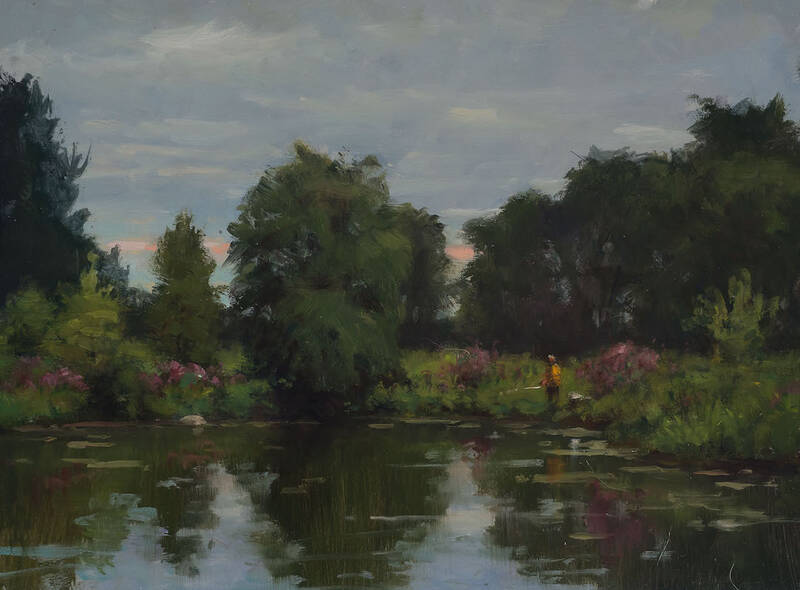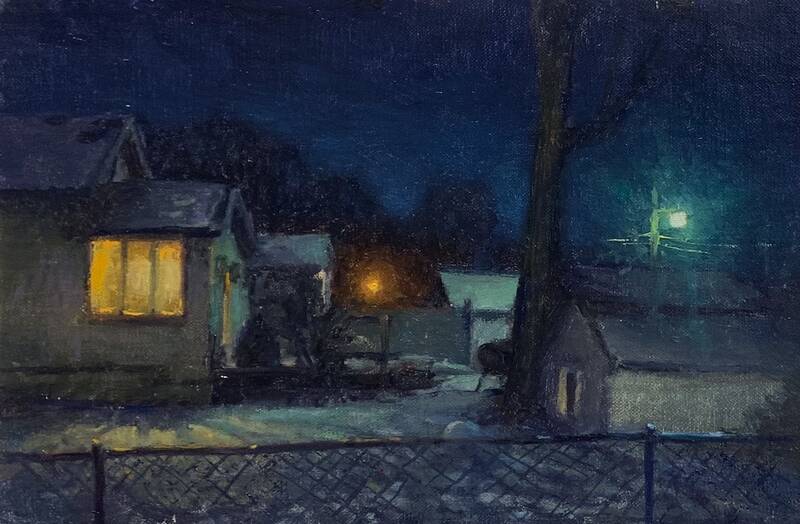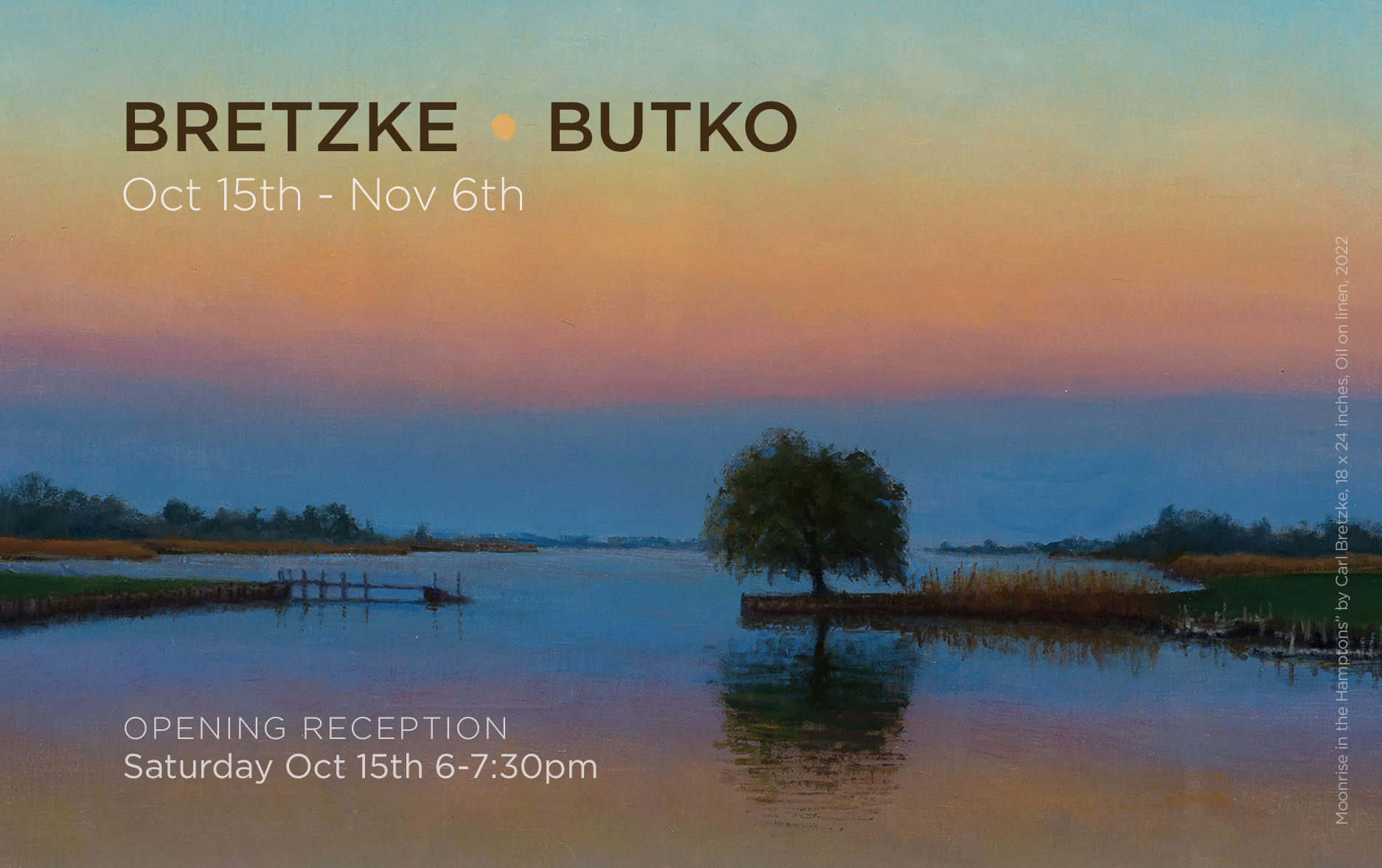
The Grenning Gallery is pleased to present our latest exhibition: Bretzke | Butko: a two-man exhibition which will hang from Saturday, October 15th through Monday, November 6th, 2022. In this show we feature the latest work from celebrated American plein-air painter Carl Bretzke and third generation Russian Impressionist painter Viktor Butko. We invite the public to our Opening Reception 6:00- 7:30pm on Saturday, October 15th. The exhibit will hang through Monday November 6th, 2022.
Carl Bretzke (b. 1954) delivers a poignant series of new paintings for his 8th consecutive year showing at the Grenning Gallery. Born, and currently based in Minnesota, Bretzke is an emotionally accurate and observant chronicler of urban and rural plein-air scenes. He is most comfortable painting the Mid-West scenes he intimately knows, and his eye for the American life is recognizable to any viewer. Having been trained and employed as a surgeon for 30 years before becoming a full-time painter, Bretzke reflects: "In medicine, you see what you know. In painting, you paint what you see. You must know it, to see it, to paint it." His work explores the prismatic palette, and he is constantly concerned with the effect of light (perhaps an upshot of his scientific background.) Bretzke's paintings perform tricks for the eye as he explores the subtle shifts of the different colors of light within the composition.
He is particularly adept at scenes which ooze in darkness, reminiscent of Edward Hopper. Bretzke remarks: "What most people don't notice is, as the light drops off, the color of light changes. You must see WHERE the color changes and where the light is coming from."
Bretzke's work also exudes a cinematic quality that evokes a more positive and connected iteration of Edward Hopper's deep dive into the American experience. Almost a 100 years later, where Hopper saw angst, Bretzke finds peace. Where Hopper found isolation, Bretzke finds comfort. In "The Last Waitress" Bretzke presents the silhouette of a woman walking away from a traditional American restaurant. Illuminated signs declare this institution with precision: "Wilsons Restaurant, Fountain Service" "Hamburgers, Lunches" and the classic "Coca-Cola" white and red logo above candy-striped awnings. One can assume this is the kind of place the locals frequent for their daily meals, a casual cup of joe, or a late-night slice of pie.
In "Movie Night" Bretzke situates us outside the newly re-built and re-furbished Sag Harbor Cinema. The prominent red neon sign that has become a landmark to the village, glows amiably, inviting all to come-in for some popcorn and a film. Bretzke showcases the liveliness of the village since the cinema reopened, with multiple figures walking along the sidewalk, cars parked on the street, and a pair of headlights creeping out of the darkness of night. Streetlights illuminate the sidewalks and storefronts sparkle, tempting window-shoppers to return for open hours. Notice all the different sources of light in this nocturne, and how diligently Bretzke observes the shifting colors of each of those lights.
"Behind Sag Harbor Main Street" bellows the quaint and quiet charm that exists beyond the commercial areas of the village. The light from Main Street echoes into the night sky - forming a radiant chartreuse atmosphere. Rooftops dissect the horizon in staggering formation. Soft lights emanate from the windows as tenants decompress in their apartments. The foreground is cloaked in darkness, yet the light catches on shiny details of a single parked automobile. This image recalls more naive American painting where simplified colorful skies hung over a sweet little village.
"Moonrise in the Hamptons" is a beautiful example of Bretzke's use of the Prismatic Palette. The sky is filled with a spectrum of color after the sunset - evidence of all the colors that exist when daylight changes into night. This spectrum is reflected onto the water in the foreground. Land dissects the horizon from the sea, a peninsula of reeds crowned with a flourishing tree - across to the left, a dock reaches out into the water.
Viktor Butko, (b.1978, Moscow) was our great find when we invited 8 Russian painters to Sag Harbor in 2016 to paint with the Grenning-Gallery-formed Russian American Painting Alliance. Not only were Butko's eyes fresh to our landscape; his attention to light and shadow was searingly satisfying. Butko's use of soft pastel colors unifying in the sky juxtaposed with thick, heavy outlines of the backlit trees are all at once transfixing and yet, comforting. Since his first visit, Butko has planted himself on Shelter Island for 6 months out of every year, painting the local landscape, making friends with locals, and even being invited onto a few properties to capture and preserve their prevailing brilliance.
For instance, in "Sunset at Dering Harbor", Butko places us on a lush green lawn at twilight. The sun is high but getting ready to set, casting a pink haze overhead. Tall trees transect our view and throw shadows directly toward the viewer. A small structure greets the shoreline, perhaps a fishing shack. Beyond, the calm pale-blue sea hosts a few sailboats at rest.
"Moon Over the Harbor" shows a vast seascape at night. The foreground is cloaked in shadow, appearing as a black mass wrapping around the shore. A duo of treetops point toward the sky, outlining the fertile wooded landscape the viewer stands upon. A grouping of boats float along the water, sleeping in stillness. The cove is illuminated by nothing but the bright round sturgeon moon. Butko has captured the perfect moment, where clouds are reaching toward the moon, wanting to cover it's light. In just a few moments, the harbor will be concealed in blackness.
Butko's keen sense of cool tones is extraordinarily striking when applied to warmer settings, for instance: "Cloudy Sunset at Dering Harbor". Painted en plein air, on Shelter Island, a lone rowboat drifts along the shoreline. A bright, salmon colored setting sun descends onto a violet horizon. The cool clouds divide the sky from the land in thick, flat stripes. A sliver of distant sea glows between the horizon and the reflected clouds. A scattering of sailboats at rest resides in this faraway slice of golden water.
A pair of still life's highlighting Lilacs, are similarly situated beside open windows. "Lilacs" is set inside a neutral toned room; a round wooden table holds up a glass pitcher abundant with lilac blossoms. A beautiful summer vista of a cloud speckled sky, a winding sea, and lush treetops allow the indoor viewer to experience the glory of the day. In "White Night", Butko concocts a similar composition, yet the open windows breathe in the cool air of nighttime. Also, instead of green canopies, we see grey rooftops upon rooftops - setting us in a metropolitan location.
